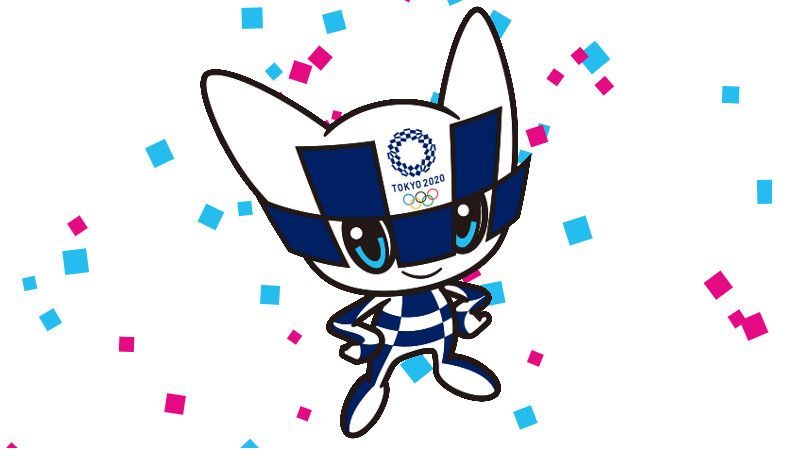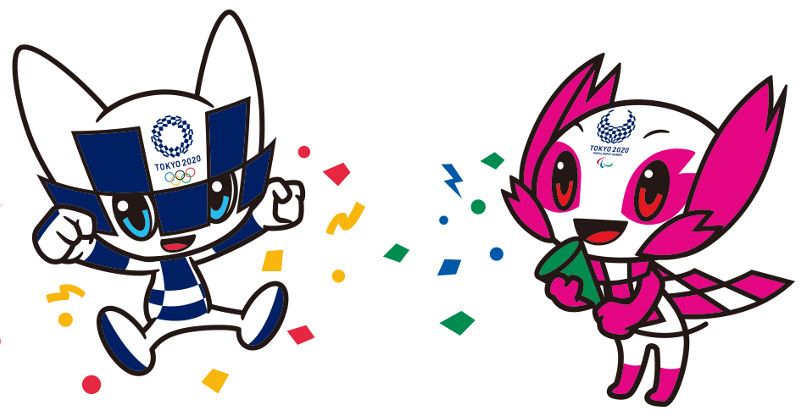The Tokyo Olympics have finally begun! Get all the information on our complete guide including schedules, event details, dates, Tokyo Stadium, other venues and more.
Mascots are used to welcome visitors to a sporting event and to enhance the excitement of children and adult fans alike. They make the games memorable, even long after they have concluded. The Olympics are no different, and they too have official mascots. Meet Miraitowa and Someity, the mascots for the 2020 Olympic and Paralympic Games in Tokyo, Japan.
Miraitowa and Someity, this year’s mascots, are meant to be embodiments of both Japanese culture and the spirit of the Olympic and Paralympic games. Both characters have an anime style and are extremely athletic – they participate in every event, from basketball and tennis to archery, kayaking, and horseback riding. The two are friends. They live in a digital world but can transfer themselves to the real world via the internet.
Table of Contents
Miraitowa
Tokyo 2020 Olympic mascot

Miraitowa is an amalgamation of respect for tradition and cutting-edge information. Its name is a fusion of the Japanese words for “future” and “eternity”. Its personality is the embodiment of a Japanese proverb that can be translated, “to learn old things well and to acquire new knowledge from them”.
Miraitowa has catlike ears, large anime-style eyes, and an athletic frame. Its white body is covered in an indigo ichimatsu pattern similar to that of the Tokyo 2020 emblem. The pattern on its face hearkens back to the helmets worn by ancient samurai. It has the special ability of teleportation, able to move anywhere instantly.
Someity
Tokyo 2020 Paralympic mascot

Someity is the Tokyo 2020 Paralympic Games mascot. Its name is derived from the popular cherry tree variety “Someiyoshino” and the English phrase “so mighty”. It has large anime eyes and accents reminiscent of the sakura cherry blossom. It is sometimes depicted in a wheelchair.
This mascot has several superpowers. It can fly using its pink ichimatsu pattern cape. The “cherry blossom tactile sensors” or antennae on the sides of its face give it telepathic abilities, including telepathic communication, the ability to talk to stones and the wind, and the ability to move objects simply by looking at them. Its dignity and physical and mental strength represent the “superhuman power” of “Paralympic athletes who overcome obstacles and redefine the boundaries of possibility”.
Selection and naming process
For the first time in Olympic history, the mascots for this year’s games were chosen exclusively by elementary school children. Children in 16,769 Japanese elementary schools, at home and abroad, participated in the voting.
Prior to the voting, mascot candidates were submitted for consideration. Any Japanese national or foreign resident over the age of 18 could contribute. Each submission contained not only an illustration but also a “profile” of the mascot’s personality and relation to Japan. The Tokyo 2020 Organising Committee received more than 2,000 entries.
The children voted on sets of finalists labeled “Pair A,” “Pair B,” and “Pair C.” The winning pair was designed by Japanese artist Ryo Taniguchi. After the selected mascots were unveiled, the Mascot Selection Panel voted on a shortlist of proposed mascot names.

Tokyo 2020 Ambassadors
The mascots are also considered Games Ambassadors. They “communicate the Values of the Olympic and Paralympic Games.” They are not the only ambassadors, however – several anime favorites will play this role, as well.
The Tokyo 2020 Olympics ambassadors include nine anime, manga, and video game heroes:
- Sailor Moon
- Luffy from One Piece
- Naruto
- Goku of Dragon Ball
- Cure Miracle and Cure Magical of Pretty Cure
- Astro Boy
- Shin Chan
- Jibanyan of Yo-kai
To the disappointment of some fans, Pikachu, Mario, and Doraemon did not make the cut. Others hoped to see the stars of sports-themed animes. Only time will tell, as the official release video announced that there could be more ambassadors to come.
Robotic versions of the characters are expected to make an appearance when the games are held in August 2020.
Merchandise
Merchandise of the mascots and ambassadors, including t-shirts and plush toys, is expected to offset the cost of the games. The mascots alone are expected to generate 14.4 billion yen (130 million U.S. dollars) in revenue. Mascot merchandise is available online and at the “Mascot House” in the Tokyo Midtown Hibiya building, where fans can also take photographs with life-sized renderings of the characters.
